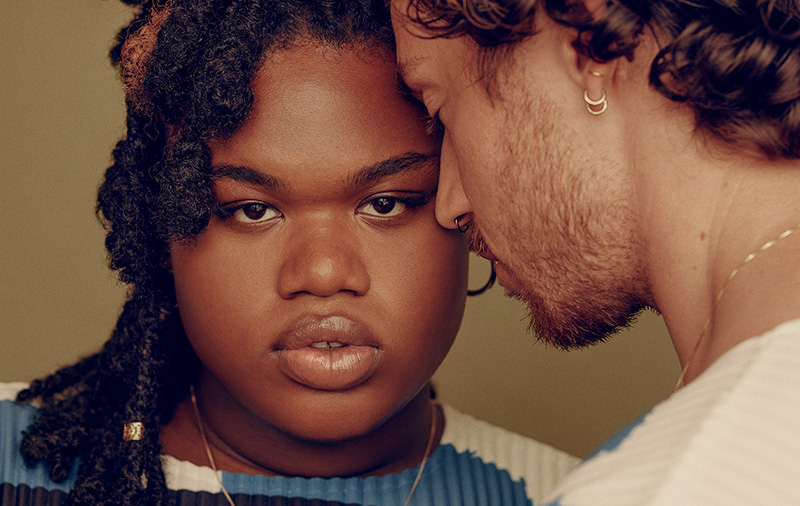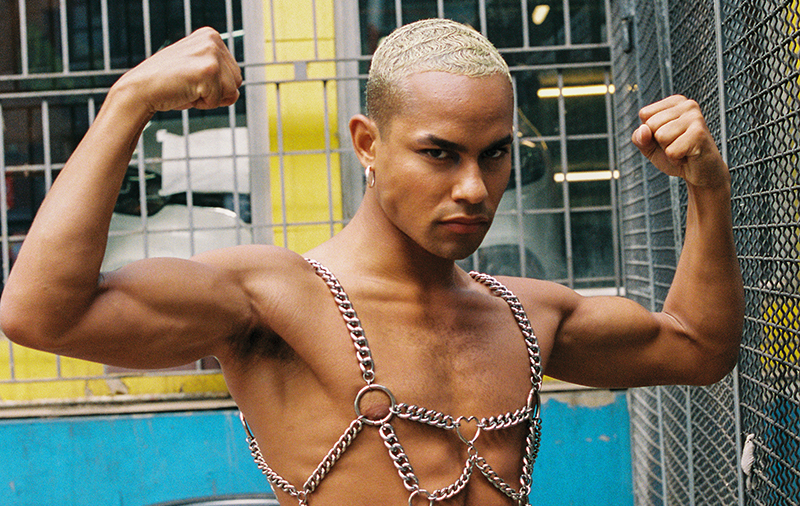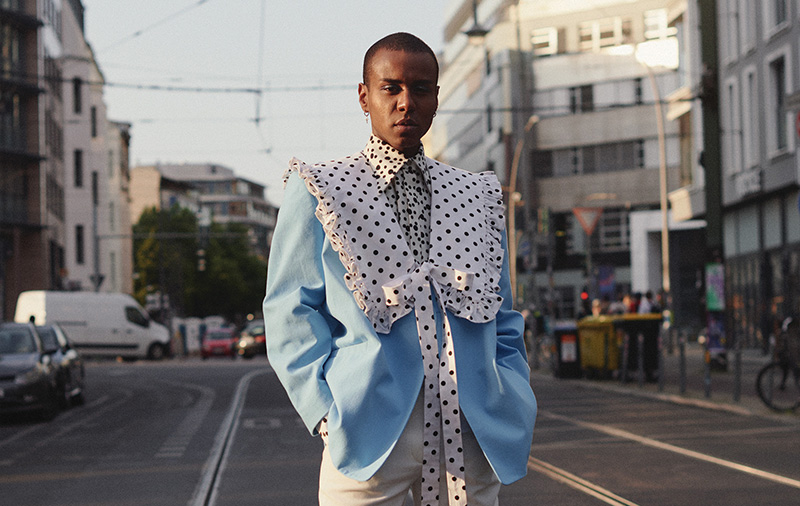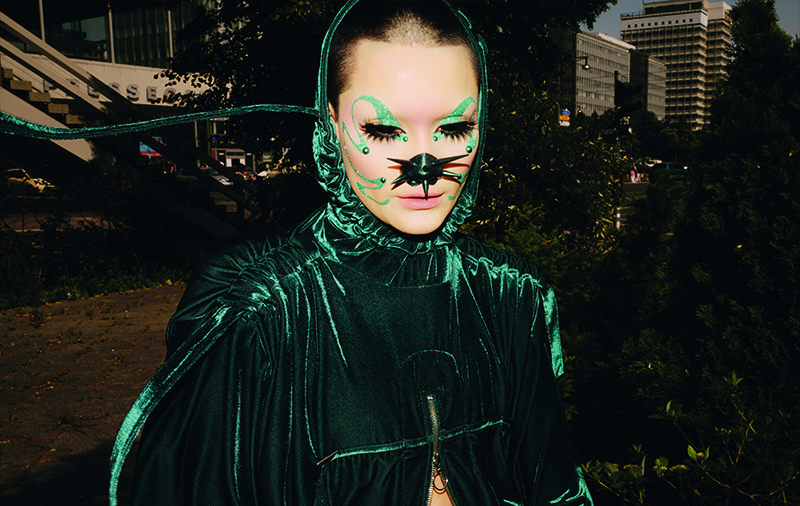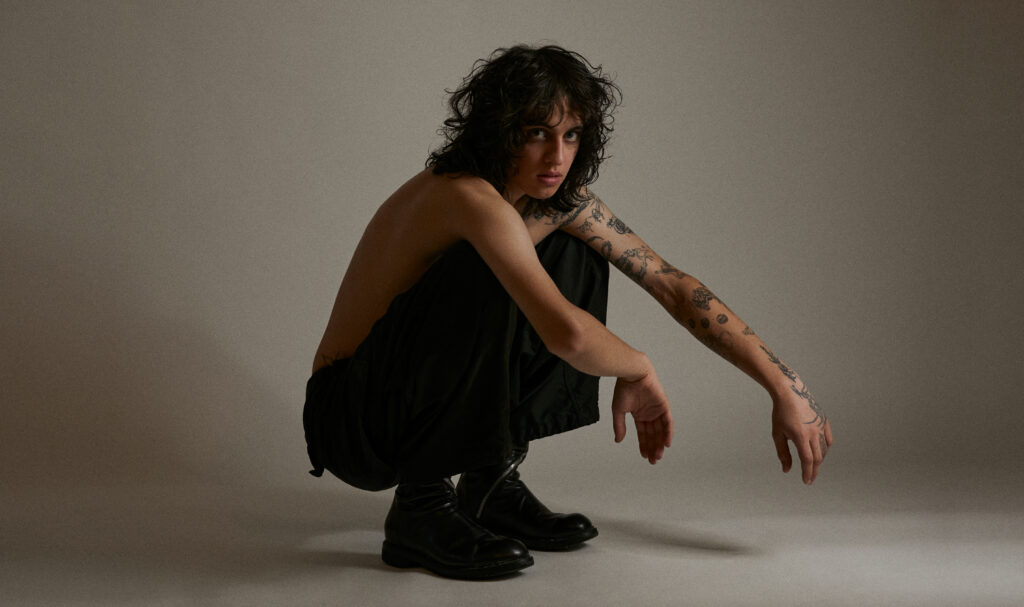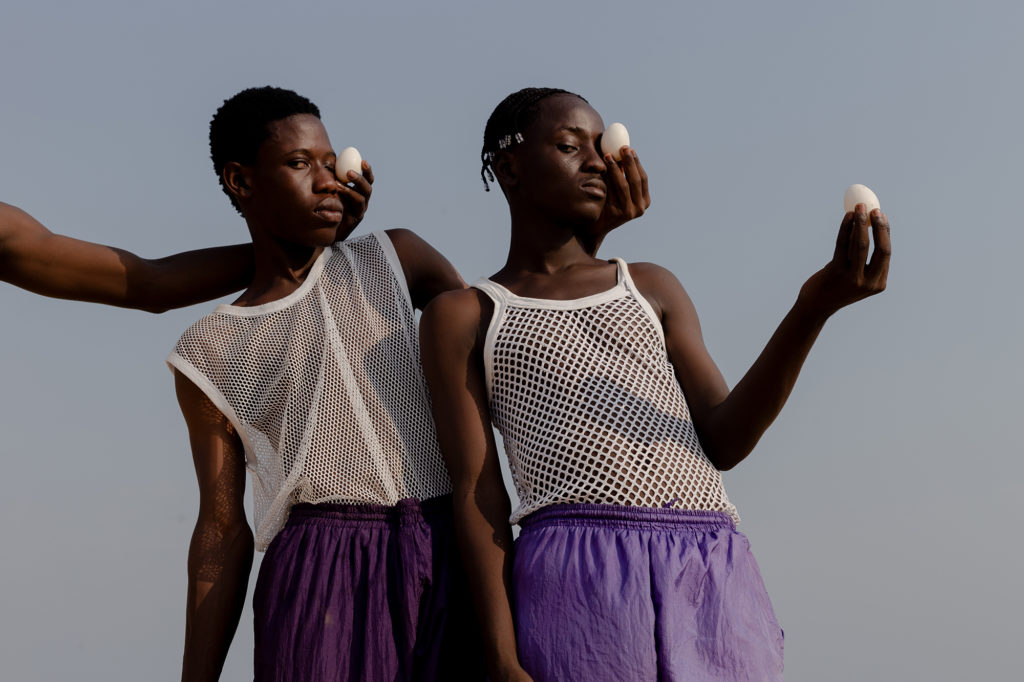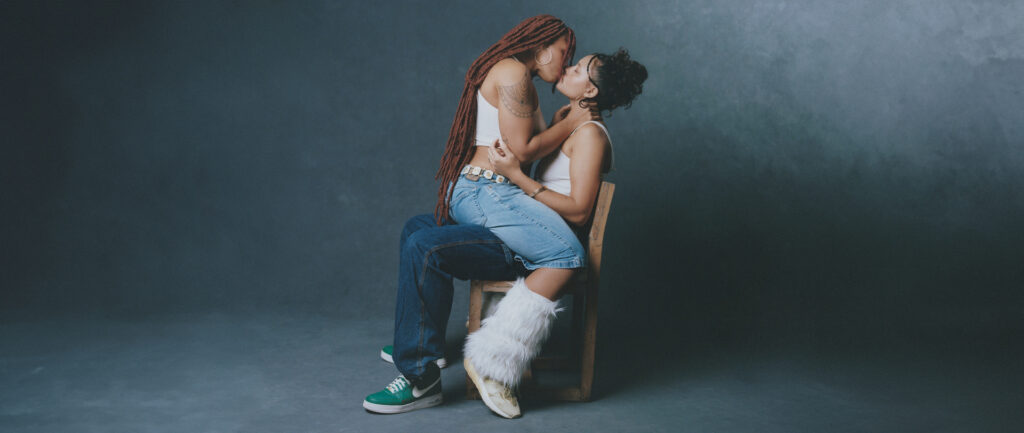Justin Thesis Smith: Dancing Away The Binary
Interviewee Dancer Justin Thesis Smith
Words Drew Lor
Meet Justin Thesis Smith, the phenomenal dancer based in Berlin that speaks to us on toxic masculinity, dance and queerness.
Queer dancer, performance artist, movement director and model with queer modelling agency uns*, Justin Thesis Smith creates heartfelt pieces of movement, bringing joy, sadness and wonder to their audiences. We sat down with them to talk about everything affecting the queer community, dance and the true meaning of toxic masculinity.


Photo by Lisa Arhelger for Figure.s x uns*
Dance is such a beautiful artistic expression that connects body, sound and meaning together. As queer people face many systemically medical and bodily interventions and judgements, Justin tells us what queerness means to her personally within dance: “My queerness brings fluidity to my dance, integrity to my art, and pure emotion to my expression,” he says, “that I dance is an extension of my relationship to music – moving my body alongside melody, rhythm and other voices puts me in conversation with the time and space around me, so that I can become truly present and in tune with my spirit.”
Toxic masculinity seems to have many meanings and interpretations – but what does it actually mean? Justin elaborates that it is “more than just the traits typically associated with heteronormative masculinity, I consider toxic masculinity to be a disingenuous way of responding and/or reacting to your environment and those around you, one which is disproportionate to your needs, as well as the needs of others and the environment … it shows up differently in different situations but that’s one of the main indicators that this imbalance is present.”
It can affect everyone of all genders and identities and usually uses power structures put in place to belittle and dehumanise. “As someone who is sensitised to these emotional wavelengths, it seems that I often end up attracting people who are plagued with symptoms of toxic masculinity but are on the brink of healing from them – and it is clear to me that there must be some traits in myself that are acting as a mirror for them, signifying that there is still much shadow work to be done within my own emotional realm,” Justin says.
“As far as dancing is concerned, I think that fostering an honest dialogue between you and your body – which is truly the foundation of any intensive physical training – is already a preventative measure which can aid in the exorcism of that toxic energy, so that is the first thing that I’ll be working towards as I reboot my professional dance journey.”
As a queer person who uses all he/she/they pronouns, Smith tells us what it means to deconstruct binary narratives and transcend previous expectations of gender. “In my understanding of this de facto dichotomy said to exist between masculinity and femininity, I see the two as impartial energetic dispositions (along with traits aligned to them) which could exist independently but have, in our “civilised” society, been branded and co-opted to represent very certain and oddly specific manmade ideals and desires… as an example, “toxic masculinity”, as such has much less to do with the traits branded as “masculine” and much more to do with the inherently violent and self-harming behavioural patterns that so insidiously attach themselves to these traits in the administration of this neo-capitalist heteropatriarchy. As such, I try to avoid using terms like “masculine” and “feminine” to describe things that already have their own names, meanings, etymologies, energies, etc.”

Pride and visibility can mean many things to various people, but it must be said that Pride was and always is a riot and protest of anti-queer rhetoric. Justin reminds us a problem that can arise from queer exposure, “it’s unfortunate to see the word “queer” being (ab)used in capitalistic marketing tactics and thrown around as some one-fits-all label, sometimes even within our community… I see ‘be(com)ing queer’ as a full-bodied action, a verb more than a noun, one that requires a consistent commitment to breaking down borders and respecting boundaries, to healing our collective trauma by attentively and readily mediating between the self and the other.”
On the other hand, visibility and exposure can provide a space of pride and love. Justin doesn’t just have one moment of visibility that makes them proud, but tells us: “I am particularly grateful to my younger self for not shying away from honesty in those earlier moments of self-discovery. Every moment I look in the mirror and see myself, the person I am proactively becoming, it still makes me proud.”
It’s super important to see yourself as a person worthy of pride – so we are grateful that Justin could remind us of this. He also tells us of why it is wonderful to be queer in the first place: “how exciting it is to actually give yourself permission to use the full scope of your imagination as a human being!”
As representation and visibility improves in the dance community, queer community and the world, people like Justin are important to put to the forefront – creative artists that use queerness within their expression, daily lives and their art. “There’s definitely an important aspect to representation and visibility that’s about giving younger queer people hope for their future,” she tells us. “If they see examples of those like them often in society and in positions of leadership, especially those whose lived experiences aren’t lacking in moments of happiness and joy, they will consider such a future possible for them too, by default.”
“But to be honest, I think the most important thing to remember about queer visibility is to not lose sight of yourself – the true, queer you.”
Keep up-to-date on Justin, their newest projects and activities on their social media! We were grateful for our talk together!
